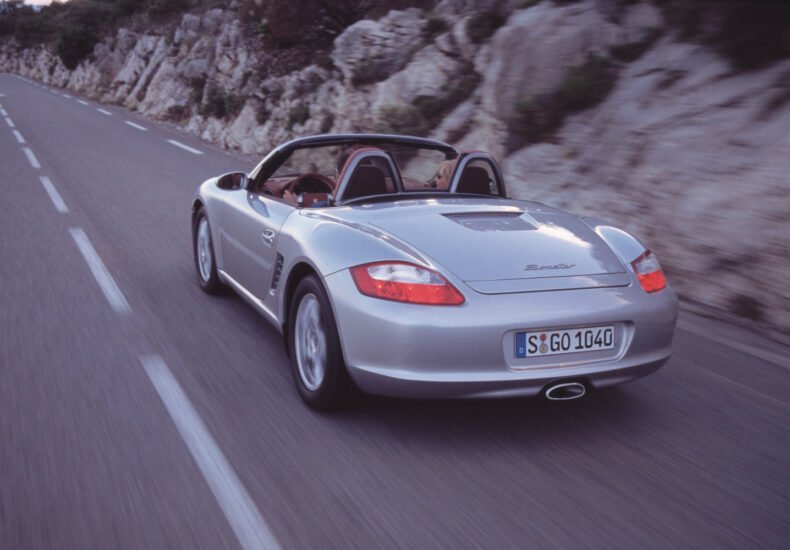
2005 Porsche Boxster – 10 Fast Facts
Porsche unveiled the second generation Porsche Boxster, known as the type 987, in 2004. Here are 10 fast facts about the 2005 Porsche Boxster.
2005 Porsche Boxster – 10 Fast Facts
2.7-Litre Flat-Six
The Boxster’s 2.7-litre, flat-six engine is mounted in the center, ahead of the rear axle line. It provides maximum power of 170 kW (240 hp) at 6,400 rpm and maximum torque of 270 Nm (199 lb-ft) at 4,700-6,000 rpm.
5-Speed Manual Gearbox
Boxster is equipped with a lightweight five-speed manual gearbox that balances ratios to match the car’s specific engine characteristics. Rapid gearshifts are achieved with a short-throw mechanism offering a 26% reduction in gear-lever travel from that of previous model.
Tiptronic S as an Option
Five-speed Tiptronic S automatic transmission was available as an option for the Boxster. In addition to the manual mode, the automatic mode offers five gearshift patterns ranging from “Economy” to “Sport”.
Direct Steering Rerponse
Boxster’s hydraulically assisted rack-and-pinion steering delivers direct action and sensitive response. The steering gear features a variable-steering ratio. Maneuverability at low speeds requires only a light touch. At higher speeds, where stability is more critical, steering input requires a heavier hand. Feedback from the front wheels is detailed and precise, enabling near-perfect communication between the driver and the road.
Lightweight Chassis
The Boxster chassis is designed with a wide track that minimizes pitch and roll. Lightweight materials are used throughout the chassis, particularly on the unsprung masses. Virtually all moving parts in the axle assemblies are made from light yet robust aluminum.
MacPherson Suspension
Boxster models have a modified version of Porsche’s proven MacPherson-type suspension. All four corners include a coil-over strut, located by a system of transverse links.
Braking System
To provide stopping power, Boxster is equipped with fourpiston, monobloc, aluminum fixed calipers at the front and rear. Cross-drilled, internally vented brake discs offer optimum cooling and excellent wet-weather performance.
Porsche Stability Management
Porsche Stability Management (PSM) is a standard feature in the Boxster. If the car begins to oversteer or understeer, PSM applies selective braking on the individual wheels to help bring it back into line.
Powerful Acoustics
Boxster’s exhaust system enhances the car’s powerful acoustics on starting, at idle and across the entire speed range. The exhaust uses a separate tract for each bank of cylinders. Since a twin-tract layout generates less back pressure than a conventional exhaust, the system has a positive effect on both power and torque.
How Fast is It?
The 2005 Porsche Boxster with the manual gearbox can accelerate from zero to 100 km/h in 6.2 seconds. With the Tiptronic S, the same sprint takes 7,1 seconds. The top speed is 256 km/h with the manual and 250 km/h with the Tiptronic S.


Images by Porsche
You may also like



